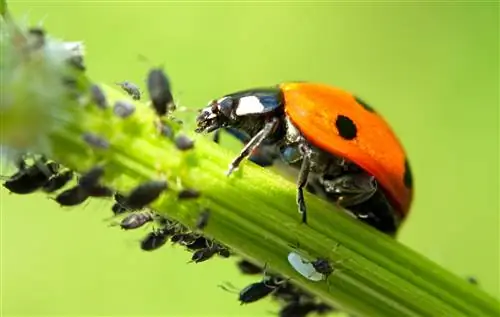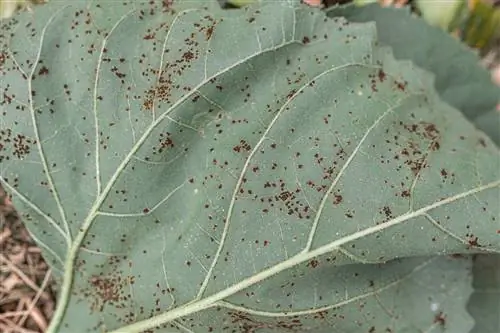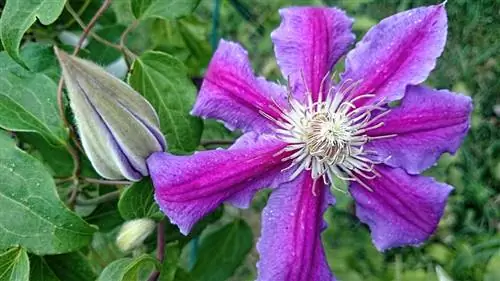- Author admin [email protected].
- Public 2023-12-16 16:46.
- Last modified 2025-06-01 06:02.
While the noble lilac (Syringa vulgaris) is only very rarely attacked by aphids, the buddleia (Buddleja) unfortunately has to struggle with these pests quite often. With the right means, the problem can be easily managed.

How can I fight aphids on lilacs?
Homemade,organic home remediesmade fromsoft soap, neem oilormilk have proven themselves at the Proven to combat aphids. Released ladybird and hoverfly larvae destroy the pests en masse and ensure an ecological balance.
How do I recognize an aphid infestation on lilacs?
Aphids area few millimeters in sizeand, depending on the species, coloredblack-brown, greenoryellow. They are mainly located in the leaf axils and on the tender shoot tips, where they suck the lilac's sap.
The pests excrete some of the sugary food as shiny, sticky honeydew.
You can often find a lot of ants near the aphids. The little crawlers milk the lice to get their excrement. In return, they defend the pests against predators.
Which home remedies work reliably against aphids?
Since aphids generally cannot fly, it is often sufficient to simplyusingthesharp jetof the garden hose from the lilac leavesto rinse.
The following home remedies have also proven to be effective for thoroughly wetting the aphids:
- Mixture of 30 milliliters of rapeseed oil, 70 milliliters of water and a few drops of dishwashing liquid.
- 250 milliliters of milk, mixed with 750 milliliters of water and a few drops of lavender oil.
- One liter of water in which 50 milliliters of soft soap are dissolved.
How are beneficial insects used against aphids?
You can buy thelarvaeof ladybirds, lacewings and parasitic wasps, packed in smallcardboard honeycombs,ingarden shopspurchase. Simply turn the opened box over and place the beneficial insects near the aphids.
Since the larvae are native species, they ensure a balanced ecosystem. They decimate the pests, no longer reproduce when the food supply decreases and serve as food for other animals.
Tip
Forgo the chemical club - for the sake of the environment
Since lilacs cope well with even severe aphid infestations, the use of chemical preparations should be avoided. These not only damage the vermin, but also the beneficial insects and thus permanently disrupt the natural balance. If there are no predators, the pests can multiply again, which makes it necessary to use more and more insecticides.






